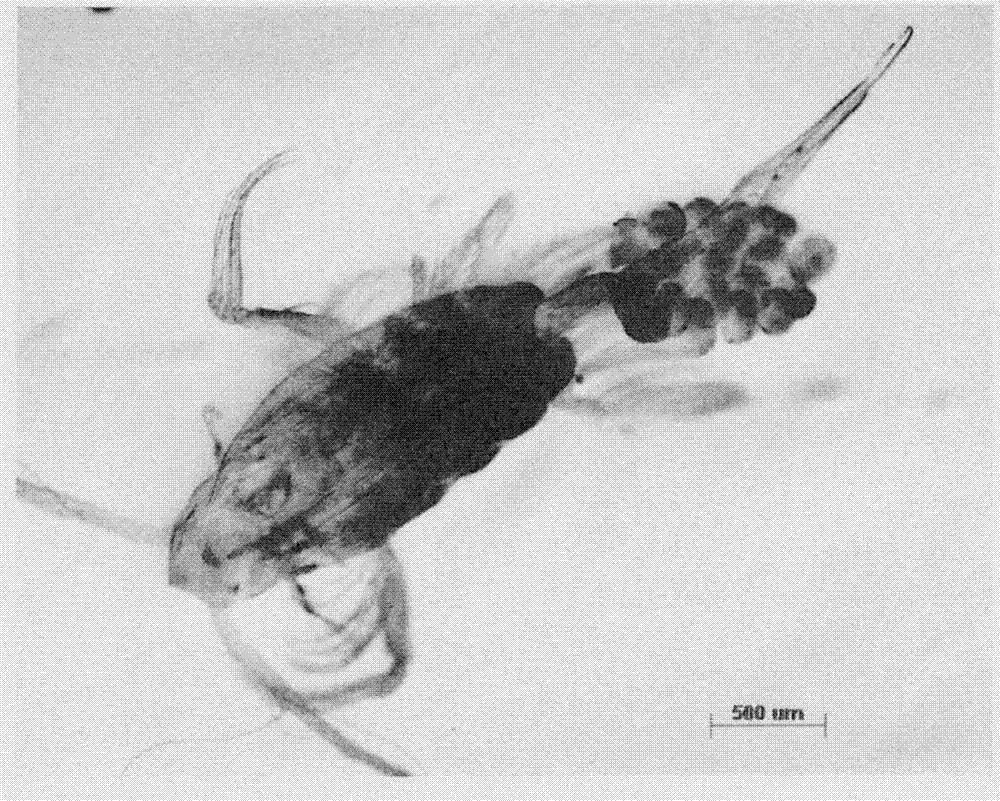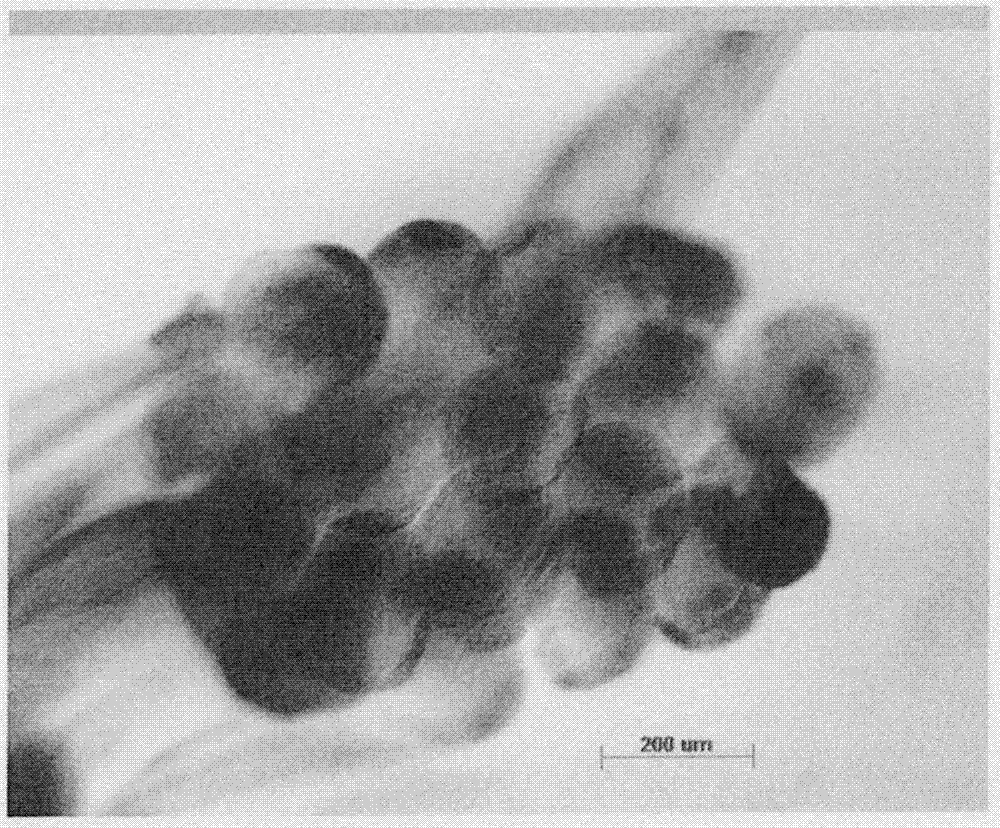Novel method for storing marine organism specimen by using epoxy resin
A technology of epoxy resin, marine life
- Summary
- Abstract
- Description
- Claims
- Application Information
AI Technical Summary
Problems solved by technology
Method used
Image
Examples
Embodiment 1
[0031] Example 1, this example provides a method for making a biological specimen that does not require staining
[0032] Firstly, the organisms that need to be made into specimens and have been fixed are directly put into absolute ethanol or acetone for dehydration. For small and tiny aquatic organisms, the dehydration time is very short. Probably ranging from tens of minutes to several days. Afterwards, the specimen is taken out and placed in a container. During this process, if the body of the specimen is very soft, it may shrink during the dehydration step. In order to prevent deformation during the dehydration process, gradient dehydration can be adopted, or the dehydration time can be shortened.
[0033] Then, mix the epoxy resin and curing agent according to the weight ratio of 3:1. In this embodiment, the epoxy resin is Nanya 128 epoxy resin (E-51), the viscosity is 12000-15000, and the epoxy equivalent is 184-190. It is a liquid bisphenol A resin. The viscosity is...
Embodiment 2
[0036] Embodiment 2, the present embodiment provides a kind of preparation method of the marine biological specimen stained with Coomassie Brilliant Blue staining solution
[0037] Firstly, the organisms to be made into specimens are directly put into absolute ethanol for dehydration. For small and tiny aquatic organisms, the dehydration time is very short. Probably ranging from tens of minutes to several days. Afterwards, the specimen is taken out and placed in a container. During this process, if the body of the specimen is very soft and easy to shrink, in order to prevent deformation during the dehydration process, gradient dehydration can be adopted, or the dehydration time can be shortened.
[0038] Weigh 100mg of Coomassie Brilliant Blue G-250 and dissolve it in 50mL of 90% ethanol, add 100mL of 85% phosphoric acid, and finally distill the volume to 1000mL with distilled water, then let the solution stand at room temperature for one month to obtain Coomassie Brilliant ...
Embodiment 3
[0043] Embodiment 3, the present embodiment provides a kind of preparation method of the marine biological specimen stained with eosin staining solution
[0044] Firstly, the aquatic organisms that need to be made into specimens are directly put into absolute ethanol for dehydration. For small and tiny aquatic organisms, the dehydration time is very short. Probably ranging from tens of minutes to several days. Afterwards, the specimen is taken out and placed in a container. During this process, if the body of the specimen is very soft, it is easy to shrink during the dehydration step. In order to prevent deformation during the dehydration process, gradient dehydration can be adopted, or the dehydration time can be shortened.
[0045] Then, add 0.1 g of alcohol-soluble eosin into 100 mL of 95% ethanol, heat to about 40° C., and stir until it is completely dissolved. Cool down to room temperature to make eosin staining solution.
[0046] Then the above-mentioned dehydrated o...
PUM
 Login to View More
Login to View More Abstract
Description
Claims
Application Information
 Login to View More
Login to View More - R&D
- Intellectual Property
- Life Sciences
- Materials
- Tech Scout
- Unparalleled Data Quality
- Higher Quality Content
- 60% Fewer Hallucinations
Browse by: Latest US Patents, China's latest patents, Technical Efficacy Thesaurus, Application Domain, Technology Topic, Popular Technical Reports.
© 2025 PatSnap. All rights reserved.Legal|Privacy policy|Modern Slavery Act Transparency Statement|Sitemap|About US| Contact US: help@patsnap.com



